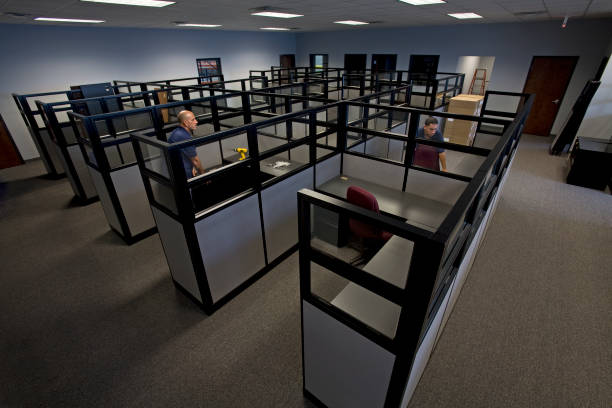In the contemporary business landscape, the significance of commercial furniture installation cannot be overstated. Whether establishing a new office, relocating, or refurbishing an existing workspace, the installation of furniture is a critical phase that impacts the functionality, aesthetics, and overall efficiency of the work environment. This article delves into the various facets of commercial and office furniture installation, highlighting its importance and the factors to consider for a seamless setup.
Why Professional Installation Matters
Professional furniture installation ensures that every piece is correctly assembled and positioned to maximize the use of space while promoting ergonomic standards. Unlike residential furniture, commercial and office furniture often involves complex systems such as modular desks, cubicles, and sophisticated seating arrangements that require precise assembly. Incorrect installation can lead to safety hazards, reduced productivity, and potential damage to expensive furniture pieces.
Benefits of Professional Installation
- Efficiency and Expertise: Professional installers bring a wealth of experience and expertise to the table. They are well-versed in handling various types of furniture and can complete the installation process quickly and accurately. This efficiency minimizes downtime and allows employees to transition smoothly into the new or revamped workspace.
- Safety: Ensuring the safety of employees is paramount. Professional installers adhere to strict safety protocols and standards, ensuring that all furniture is securely assembled and stable. This reduces the risk of accidents and injuries in the workplace.
- Optimal Space Utilization: Professional installers have a keen eye for space planning. They can optimize the layout to enhance workflow, ensure proper spacing between furniture, and create a more organized and efficient workspace. This expertise is particularly valuable in small or irregularly shaped offices where space is at a premium.
- Customization and Flexibility: Commercial and office furniture often requires customization to meet specific needs. Professional installers can make adjustments on-site to ensure that furniture fits perfectly into the designated spaces and meets the unique requirements of the business. This flexibility ensures that the workspace is tailored to the company’s operations and culture.
Key Considerations for Furniture Installation
- Planning and Design: Before the installation begins, thorough planning and design are crucial. This involves understanding the specific needs of the business, the type of furniture being installed, and the layout of the workspace. Engaging with a professional installer during the planning phase can help identify potential challenges and devise effective solutions.
- Coordination with Other Services: Furniture installation often needs to be coordinated with other services such as electrical work, data cabling, and interior design. Professional installers can work in tandem with these service providers to ensure that the installation process is smooth and that all elements are integrated seamlessly.
- Ergonomics: One of the primary goals of office furniture installation is to create an ergonomic environment that promotes employee well-being and productivity. Professional installers pay close attention to ergonomic principles, ensuring that desks, chairs, and other furniture are set up to support good posture and reduce the risk of musculoskeletal disorders.
- Technology Integration: Modern offices are heavily reliant on technology. Professional installers can ensure that furniture is positioned to support the integration of technology, including computers, monitors, and other equipment. They can also manage the cabling and wiring to keep the workspace tidy and reduce tripping hazards.
- Sustainability: Increasingly, businesses are prioritizing sustainability in their operations. Professional installers can advise on and implement environmentally friendly practices, such as using furniture made from sustainable materials, recycling packaging materials, and minimizing waste during the installation process.
The Installation Process
The process of commercial and office furniture installation typically involves several stages:
- Preparation: This stage involves clearing the workspace and preparing it for the installation. This may include removing old furniture, cleaning the area, and ensuring that all necessary utilities are in place.
- Delivery and Inspection: Once the furniture is delivered, it is inspected to ensure that all components are present and undamaged. Any discrepancies are addressed promptly to avoid delays.
- Assembly and Placement: Professional installers then proceed with assembling the furniture. This step requires precision and attention to detail to ensure that all pieces are correctly assembled and securely fastened. The furniture is then placed according to the planned layout, ensuring optimal use of space and functionality.
- Final Adjustments and Clean-Up: After the furniture is in place, final adjustments are made to ensure everything is aligned correctly and functions as intended. The workspace is then cleaned up, with all packaging materials removed and disposed of responsibly.
- Walkthrough and Handover: Finally, the installers conduct a walkthrough with the client to ensure satisfaction and address any last-minute concerns. They provide instructions on how to use and maintain the furniture to ensure longevity and performance.
Conclusion
In conclusion, the installation of commercial and office furniture is a critical task that requires professional expertise to ensure safety, efficiency, and optimal functionality. Businesses that invest in professional furniture installation benefit from a well-organized, ergonomic, and aesthetically pleasing workspace that can significantly enhance productivity and employee satisfaction.
When considering a partner for your furniture installation needs, it’s essential to choose a contractor with a proven track record of excellence and reliability. Naimoli General Contractors, known for their comprehensive construction and installation services, can provide the expertise and attention to detail required to transform any workspace into a productive and inspiring environment. By partnering with experienced professionals, businesses can ensure a seamless and successful installation process that meets their unique needs and standards.







